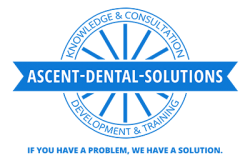Grow your practice with a targeted referral strategy
We all want more clients. If you want your practice to grow one of the best metrics you can use to track success and predict future growth is how many new patients come through your door each month vs those you lose.
There are many strategies you can use to keep your funnel full, including advertising and sponsorships that will help increase your brand recognition. However one of the most significant things we can do in the healthcare industry to improve our businesses is increase referrals from existing clients.
 I recently spoke to Stacey Brown Randall from Growth by Referrals about how a properly implemented referral strategy can help dentists get more of the patients “they want” to choose their practice.
I recently spoke to Stacey Brown Randall from Growth by Referrals about how a properly implemented referral strategy can help dentists get more of the patients “they want” to choose their practice.
“First you need to be willing to touch business development everyday,” says Randall.
“When I started paying attention to how we are taught to do referrals – which is to ask – it really sounded like a cold call to me.”
For Randall “the ask” was a significant barrier. So she developed a system whereby you identify who the clients you already have that you would like to have more of and turn those existing patients into advocates for your business by going beyond once or twice a year contacts and actually offering the type of client experience that keeps you top of mind.
“We typically refer people who are like us,” says Randall. “However only 20% to 30% of clients refer on a consistent basis. So you need to have the right client experience and referral strategy in place so that when opportunities for referral occur people are saying ‘you have got to go see my dentist’.”
This is a great point as it does not simply mean that you are increasing the number of referrals – but also the quality of those who are referred.
If dentists do their tracking properly there is always a referral source. Whether it’s a personal referral, or a referral from an insurance company or even another healthcare professional.
“A lot of referrals should be coming from other practitioners,” says Randall. “So dentists and other healthcare professionals should be cultivating those relationships.”
If you would like to learn more about Stacey you can visit her site www.GrowthByReferrals.com.
Ascent Dental Solutions is a full-service agency dedicated to helping dentists build their practices and map out their careers. It is the brainchild of Dr. Kevin Coughlin, who earned his doctorate at Tufts University School of Dental Medicine and currently serves as a faculty member there. While Dr. Coughlin continues to practice dentistry as the principal owner of the 14-location Baystate Dental PC, he has a strong passion for helping fellow dentists maximize their success. If you are interested in learning how to take your dental practice to the next level, please contact Ascent Dental Solutions today at 413-224-2659 to learn how Dr. Coughlin can help.
